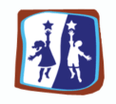Primary Classrooms 3-6 Years

Primary Classrooms at GMS (Agave & Sunflower)
In this special environment prepared for them in our school, the children themselves found a sentence that expressed this inner need. 'Help me to do it by myself!'
— Maria Montessori
The Montessori Approach is the Prepared Environment
Our primary classroom provides a warm, inviting atmosphere that is both peaceful and spacious. Shelves have been carefully arranged and decorated with objects to attract the child for further exploration and to gain respect for the environment. Everything is child-sized and accessible, encouraging children to move about independently. Children are provided with real experiences matching developmental interests. We do not "pretend" to prepare food or to sew; the child really learns how to prepare food and to sew! Through observation, the guide carefully chooses activities that best meet the physical, mental, and spiritual needs of each individual child in the primary classroom. Once a lesson is presented, the child is free to choose this activity off of the shelf, work with it as long as desired, and return the activity back on the shelf when finished.
GMS Focuses on Four Main Areas in the Primary Classroom
Practical Life:
Practical Life is the point of entry for all children to life in the primary classroom. Children learn things such as how to behave appropriately in a community, how to coordinate big body and fine motor movement, how to care for oneself, and how to care for various objects in the environment, and for the environment itself. Children also learn how to prepare food for snack time and learn how to eat a well-balanced meal.
Sensorial:
In the Sensorial Area, activities are based on the five senses that we perceive: touch, vision, hearing, smelling, and tasting. Children are able to explore and interact with objects that isolate one sense and its quality. In turn, they are able to classify and categorize impressions of the world around them. Later work combines qualities in a more advanced format thus stimulating the intellect of older children and preparing for higher mathematics such as geometry. Sensorial helps build cognitive skills and is crucial to the development of long-term memory.
Language:
Spoken language forms the foundation for all other language activities in the primary classroom. Children are provided with a rich vocabulary experience through songs, poems, stories, conversation, and objects in the environment. As vocabulary increases, the child's confidence is gained and s/he delights in being able to effectively communicate with others. The child is invited to break down and reconstruct the individual sounds (phonemes) of words, and it is from this that an interest in letters and writing develops. Children will often spontaneously read their first word in the classroom, and love the opportunity to expand their knowledge.
Mathematics:
All of the child's experiences in the Practical Life, Sensorial, and Language areas culminate to form the foundation for readiness and interest in Mathematics. Children are introduced to the Mathematics Area once they are able to make one to one correspondence with everyday objects and follow a logical sequence of activity. Through Mathematics, children work with concrete materials that help to develop abstract reasoning skills. The four mathematical operations and the decimal system are introduced in a way that is both fun and explorative.
Extentions:
Additional subjects such as Biology, Zoology, Chemistry, Physics, Music, Geography, Geology, Archaeology, Botany, Art, etc., are presented as extensions of the Sensorial and Language areas.
Photo Gallery

Sandpaper numerals

Function of words: grammar symbols lesson

Pink Tower

STEAM Fair project

Outdoor washing work
